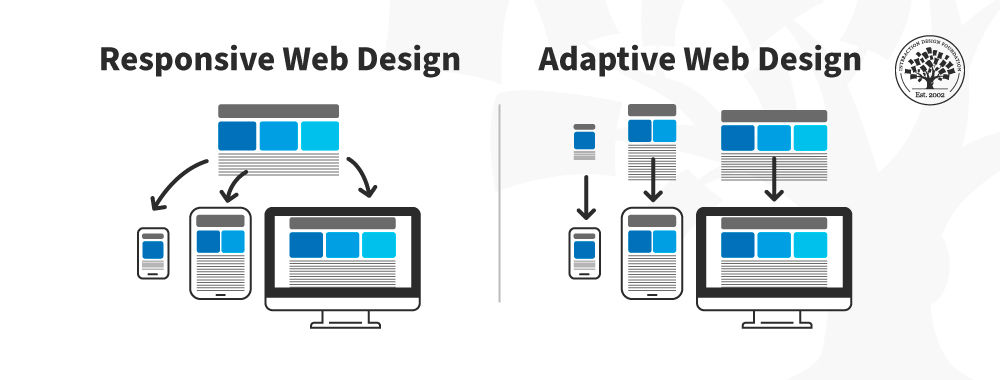Trick Considerations to Remember When Establishing a Modern Web Layout That Aligns With Present Trends
In the ever-evolving landscape of website design, it is necessary to take into consideration numerous critical variables that not just show present fads yet additionally boost customer involvement. A receptive layout is extremely important, making certain that customers experience seamless performance throughout numerous devices. Focusing on user experience with user-friendly navigation and aesthetic appeal can not be ignored. Nevertheless, the intricacies expand past simple visuals and capability; recognizing the complex equilibrium of accessibility and performance optimization is just as important. As we check out these measurements, the ramifications for modern website design become significantly considerable. What might these factors to consider expose concerning the future of digital experiences?
Responsive Design Concepts

The core of responsive design exists in its capability to change layout and material based on the individual's display size and orientation. By utilizing relative devices like portions rather than repaired devices like pixels, developers can create scalable designs that maintain visual stability. In addition, utilizing media queries permits the application of different designs depending upon the features of the device, helping with customized experiences that enhance use.
Furthermore, receptive style is not simply a technical consideration; it is pivotal in fitting the boosting use of mobile phones for web surfing. As user expectations evolve, making certain access and performance throughout all platforms ends up being important for preserving involvement and complete satisfaction. Thus, welcoming receptive style concepts is essential for modern web development, fostering inclusivity and future-proofing digital web content.

Focus on User Experience
User experience (UX) has become a central focus in modern website design, matching the concepts of receptive design by prioritizing just how users engage with websites. A properly designed UX can dramatically influence user retention, contentment, and involvement, highlighting the demand for designers to create intuitive and delightful experiences.
Trick aspects of efficient UX design include usability, capability, and aesthetics. web design. Websites should be very easy to navigate, making certain customers can discover the details they look for without confusion. Clear and concise navigating menus, consistent layout, and logical web content company are crucial in attaining this goal. Additionally, performance plays an essential function; interactive aspects have to function perfectly across all web browsers and devices.
Visual factors to consider can not be overlooked, as an aesthetically enticing style can enhance customer understanding and motivate expedition. Color pattern, typography, and imagery should be attentively incorporated to create a appealing and natural user interface.
Furthermore, integrating user comments right into the design process is essential. Carrying out functionality testing and gathering understandings from real users can supply beneficial info to fine-tune the design and address pain factors. Eventually, a solid focus on individual experience will certainly aid develop sites that resonate with visitors, fostering commitment and driving conversions.
Value of Availability
Availability is a basic element of contemporary website design, making certain that all customers, no matter of their capabilities or disabilities, can navigate and connect with electronic web content properly. As the net becomes progressively integral to life, it is vital that web sites are inclusive, accommodating a diverse target market that includes people with visual, acoustic, cognitive, and electric motor problems.
Carrying out ease of access functions not only abides by legal needs, such as the Americans with Disabilities Act (ADA) and the Web Web Content Access Standards (WCAG), but additionally enhances individual experience for everybody. Easily accessible styles commonly bring about better navigating, quicker filling times, and enhanced search engine optimization, profiting all users.
In addition, promoting a comprehensive electronic setting mirrors positively on a brand's credibility. Companies that focus on accessibility demonstrate social responsibility and a commitment to equity, which can boost client commitment and widen their market reach.
Including functions such as alt text for images, key-board navigation, and adjustable text sizes are useful steps in attaining this goal. Ultimately, ease of access needs to be checked out not as an afterthought yet as a core principle in the website design process, forming a digital landscape that accepts all users.
Existing Visual Trends
Accepting existing visual fads is critical for developing visually enticing and interesting web sites that capture user focus. In today's electronic landscape, minimalism proceeds to control, emphasizing original site clean lines, sufficient white area, and straightforward navigating. This approach not only enhances readability however also enables crucial web content to beam, aligning with individual assumptions for simpleness and clearness.
Moreover, making use of bold typography is increasingly popular, providing a distinct voice and enhancing brand name identity. Large, eye-catching font styles can create visual hierarchy, assisting individuals through the web content efficiently. In addition, lively color schemes are making a return, allowing developers to evoke emotions and produce remarkable experiences.
One more pattern is the consolidation of natural shapes and asymmetrical formats, which can add an element of surprise and imagination, setting an internet site apart from more conventional designs. The assimilation of immersive visuals, such as top notch pictures and videos, can involve users and communicate messages a lot more incredibly.
As these visual trends develop, it is crucial for internet designers to remain informed and adapt their techniques, guaranteeing their creations remain relevant and reverberate with contemporary audiences.
Enhancing for Performance
While visual factors to consider play a substantial role in attracting individuals, enhancing for performance is equally important to make certain a smooth surfing experience. A well-designed website needs to load promptly and respond without delay to customer communications, as delays can result in disappointment and boosted bounce rates.
To accomplish optimum performance, designers need to focus on lessening documents sizes by pressing photos and making use of reliable coding techniques. Executing careless loading strategies can also enhance rate by postponing the loading of non-essential resources till they are needed. In addition, leveraging see Content Shipment Networks (CDNs) can distribute static possessions more detailed to individuals, lowering latency.
Moreover, it is vital to utilize contemporary web modern technologies such as HTML5 and CSS3, which not just boost efficiency however additionally enhance compatibility across numerous gadgets and browsers. Frequently keeping an eye on internet site speed making use of tools like Google PageSpeed Insights can give useful understandings right into locations for renovation.
Conclusion
In final thought, modern internet design demands a diverse method that incorporates receptive layout principles, an emphasis on user experience, and rigorous adherence to ease of access standards. Collectively, these considerations add to the production of an impactful and cohesive on the internet existence that satisfies the diverse needs of contemporary individuals.
In the ever-evolving landscape of internet design, it is crucial to consider numerous essential elements that not just show existing patterns yet likewise enhance individual interaction. A responsive design is vital, guaranteeing that individuals experience seamless top article performance across numerous gadgets.The core of receptive design lies in its capability to adjust layout and web content based on the user's screen size and alignment.Additionally, incorporating user comments into the layout procedure is necessary.In conclusion, modern internet layout demands a multifaceted technique that encompasses receptive style principles, an emphasis on customer experience, and strict adherence to availability standards.